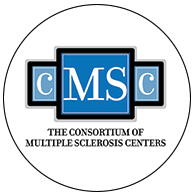Researchers say genetic makeup is a factor, but so are smoking, obesity, vitamin D, and viral infections.
A combination of genetic and environmental factors are leading contributors to a diagnosis of multiple sclerosis (MS).
Viral infections and tobacco smoking are two major triggers of the disease.
Key environmental factors usually occur before age 15.
And factors that cause the onset of MS may differ from those that cause its progression.
Those are the conclusions from experts from seven centers around the world who recently reviewed 5 years of published papers on genetic and environmental factors that could lead to MS risk, relapses, and progression.
Their findings were published in the Annals of Clinical and Translational Neurology on behalf of the American Neurological Association.
MS appears to start as an immune disorder caused by a complex interaction between genetic predispositions, viral infections, and factors that lead to inflammation, including smoking, obesity, and low sun exposure.
“There is a lot of research ongoing,” Dr. Emmanuelle Waubant, co-author of the review and professor of neurology and pediatrics at the University of California, San Francisco, told Healthline.
“Causality is unproved for many of the factors,” Waubant explained. “The review, designed to find causality, is citing the state of knowledge right now.”
“Knowledge changes, and our interpretation of the knowledge changes,” Nick LaRocca, PhD, vice president of healthcare delivery and policy research for the National Multiple Sclerosis Society, told Healthline. “We need to do this review periodically to see where we are and where we need to go.”
“[This paper] outlines that we are further along in understanding the risks of MS, progression, and disease activity,” he said.
Some risk factors for onset, such as low sun exposure, a lack of vitamin D, or tobacco smoking, were also risk factors for relapses (vitamin D and low sun exposure) or progression (tobacco smoking), but not for both.
Some factors, such as previous viral infection with the Epstein-Barr virus, were associated with onset but not with clinical relapses or progression. Pregnancy was associated with relapses but not onset or progression.
The study authors noted that some pro-inflammatory factors aren’t strong factors for progression. They did conclude that pro-inflammatory factors may cause relapses, and neurodegeneration may cause progression.
Factors leading to progression haven’t been researched as much as those for relapses and onset.
Genes as a risk factor
While a genetic connection to MS has been known for more than 50 years, more recent research has shed light on the subject.
Several gene variants reportedly contribute to MS susceptibility. The main one, HLA DRB15:01, is found in 25 to 30 percent of the population in Northern Europe and the United States. The reasons for this association remain unclear.
The second strongest gene variant, HLA A02, may be triggered as a result of a viral infection, such as Epstein-Barr virus, the researchers reported.
Most genetic research in MS has been focused on European ancestry. Recent studies in African Americans have shown a significant overlap with MS variants reported in Caucasian people.
Genetic risk scores for variants associated with obesity have confirmed a strong association with pediatric and adult MS, suggesting causality. But, in a study of more than 7,000 individuals with MS, a genetic burden score was not associated with disability.
Epigenetics
Genetic makeup can’t be altered, but environmental factors can affect it.
Epigenetics refers to the effect of the environment on genetic structure. It includes aging and the body’s interaction with the environment.
Smoking is an example of how MS risk can be compounded even in those with genetic susceptibility for MS. Other factors include the Epstein-Barr virus, herpes viral infections, and adolescent obesity, but not oral nicotine.
If this is the case, then it suggests that general lung irritation could contribute to MS risk, the researchers reported.
Age matters
The study authors concluded that key environment exposures associated with adult-onset MS occur before age 15.
New research also suggests risk factors may occur in utero and in neonates, especially for pediatric-onset MS.
Lower vitamin D status during pregnancy or infancy is associated with increased risk of MS in white people.
People with MS are more often born in post-winter months versus post-summer months, the researchers stated.
Viral infections
There’s strong evidence across ethnic groups that previous Epstein-Barr virus infections, including infectious mononucleosis, is associated with an increased risk of MS.
A recent meta-analysis of 41 studies that met high-quality inclusion criteria showed an increased MS risk in association with evidence of past infection with herpes virus 6.
Children with a prior exposure to herpes simplex virus showed a modest increase in the risk of pediatric MS. This was mostly seen in white people, the researchers noted.
Sun exposure and vitamin D
MS occurrence increases farther away from the equator, leading to suggestions of low sun exposure and vitamin D levels in the risk of MS, the researchers noted.
Research suggests the risk of MS is higher with lower sun exposure in childhood, adolescence, adulthood, and over a lifetime.
Despite the variety of ways to measure sun exposure, the findings are relatively consistent, but not completely.
Lower blood levels of vitamin D are associated with increased risk of MS in white people. A similar association isn’t seen in Hispanic and black people.
And a recent comprehensive review of vitamin D and MS concluded a low level is associated with increased disease activity.
The findings showed results that both UV radiation and vitamin D have effects on the immune system that could be beneficial for MS. But randomized control trials of vitamin D supplementation haven’t shown the hoped-for benefits.
“It doesn’t have the relationship with disease activity as we thought,” LaRocca said.
Male vs. female
The ratio of females to males living with MS is about 3-to-1 between puberty and menopause.
Before reaching puberty, the ratio is 1-to-1.
Earlier age at menstruation is associated with an increased risk of MS, and the onset of pediatric MS peaks two years after. The exact reasons why are unknown, the researchers reported.
Two recent studies found that women who exclusively breastfeed their infants and for a prolonged period of time may have a lower subsequent risk for MS. The reasons are unknown.
Research shows that pregnancy doesn’t worsen the long-term outlook, despite increased risk of relapses in the early postpartum period. It’s unknown if pregnancy improves MS outcome, the researchers reported.
Smoking and tobacco
Cigarette smoking is a well-established risk factor for MS onset.
The starting age doesn’t seem to affect the risk, but quitting does reduce the risk of MS.
Chewing tobacco or snuff doesn’t show the same risk. This suggests the risk from tobacco smoke is due to lung irritation and inflammation.
Nicotine itself may have neuroprotective effects, the researchers reported.
Obesity
Several high-quality studies have reported that obesity in adolescence and early adulthood is associated with approximately double the risk of developing pediatric and adult MS, the researchers noted.
Obesity is a low-grade inflammatory state. It could act as a cofactor in triggering MS at an earlier age of onset.
Obesity before disease onset is associated with younger age at onset, but only in women.
Earlier age at progression to secondary progressive MS is demonstrated only in smokers.
Editor’s note: Caroline Craven is a patient expert living with MS. Her award-winning blog is GirlwithMS.com, and she can be found on Twitter.
By Carolyn Craven












